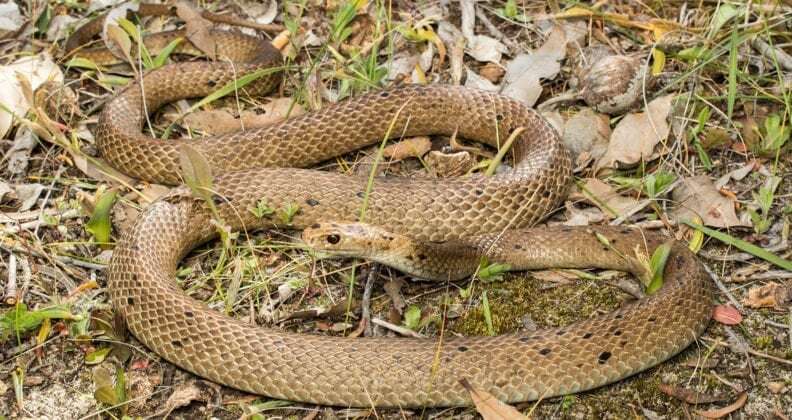Credit: Damian Lettoof
Curtin University-led research has found that common reptile species in Perth are accumulating rat poisons at an alarming rate, posing serious implications for the wider urban food web in Australia, and around the world.
The research, published in the journal Science of the Total Environment, tested the livers of three reptile species—the dugite, tiger snake and bobtail lizard—to see if common household rat poisons, known as anticoagulant rodenticides, were ending up in these species.
Lead researcher Ph.D. candidate Mr Damian Lettoof, from the Behavioural Ecology Research Group in the School of Molecular and Life Sciences at Curtin University, said rat poisons are commonly used around the world to control pests, but there has been little research investigating their effect on reptiles.
"Anticoagulant rodenticides are commonly used to control rodents and reduce the impact they have on the environment, but a lot of other animals are exposed to these poisons either from eating baits or eating poisoned rodents. In many countries, including Australia, there is little regulation of rat poisons and they can be purchased by anyone from shopping centres or hardware stores, and this can result in the poisoning of a lot of local species," Mr Lettoof said.
"We tested three different reptiles, who all have different diets and live in different environments around Perth including Nedlands, Jandakot and Maddington. Adult dugites eat rodents, bobtail lizards feed on vegetation and insects, and tiger snakes, which commonly reside in wetlands, prefer eating frogs.
"Of the species tested in our study, we found that 91 percent of dugites were exposed to up to five different rat poisons, including one snake with a concentration that would be lethal to birds. This was expected for a snake that eats rodents. Surprisingly, we found rat poisons in 60 percent of bobtail lizards and 45 percent of tiger snakes, which is really concerning given their dietary preference."
Mr Lettoof said there is limited research on how much rat poison is toxic to reptiles, but if they can live for many years with these toxins in their bodies then it could pose a serious risk to their predators such as birds and mammals.
"Our study could have potential implications for other countries which don't have strict regulations for these types of rat poisons. Almost every urban landscape around the world has a rodent-eating, an omnivorous, and a frog-eating reptile, and our research suggests they could all be exposed. If anything eats these urban reptiles they could be poisoned if those reptiles have accumulated high amounts of toxins," Mr Lettoof said.
"Along with other animals, the accumulation of rat poisons in urban reptiles also poses a risk to human health, especially in countries such as China, Vietnam or Malaysia where reptiles are regularly eaten. Further research is needed to determine the scope and severity of rat poison exposure in reptiles in order to mitigate risk to humans and wildlife."
More information: D.C. Lettoof et al. Toxic time bombs: Frequent detection of anticoagulant rodenticides in urban reptiles at multiple trophic levels, Science of The Total Environment (2020). DOI: 10.1016/j.scitotenv.2020.138218
Journal information: Science of the Total Environment
Provided by Curtin University
























